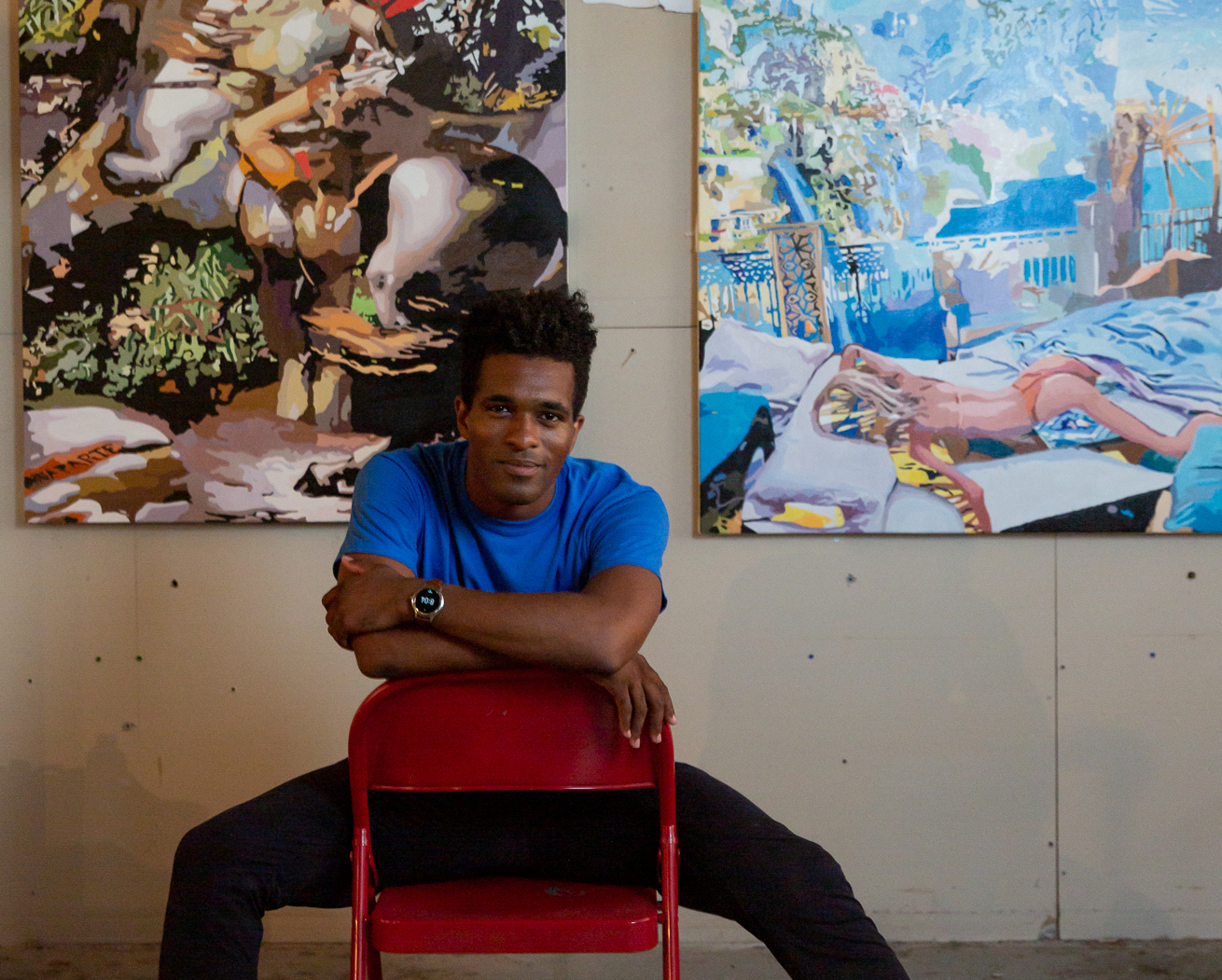Founded by brothers Jacob and Isaac Pritzker and Jud Bergeron, The Space Program is an artist residency that recently opened in San Francisco as an effort to combat the ever-growing issue of space in the crowded city. Although the program is not yet hosting artists, the building is currently presenting “Pleasure Over Matter.”
Featuring the works of more than ten artists like Adehla Lee, Keegan Monaghan, and Darryl Westly, “Pleasure Over Matter” (on view through August 31) creates a dialogue on the relationship between the physical and the experience—valuing pleasure over materials.
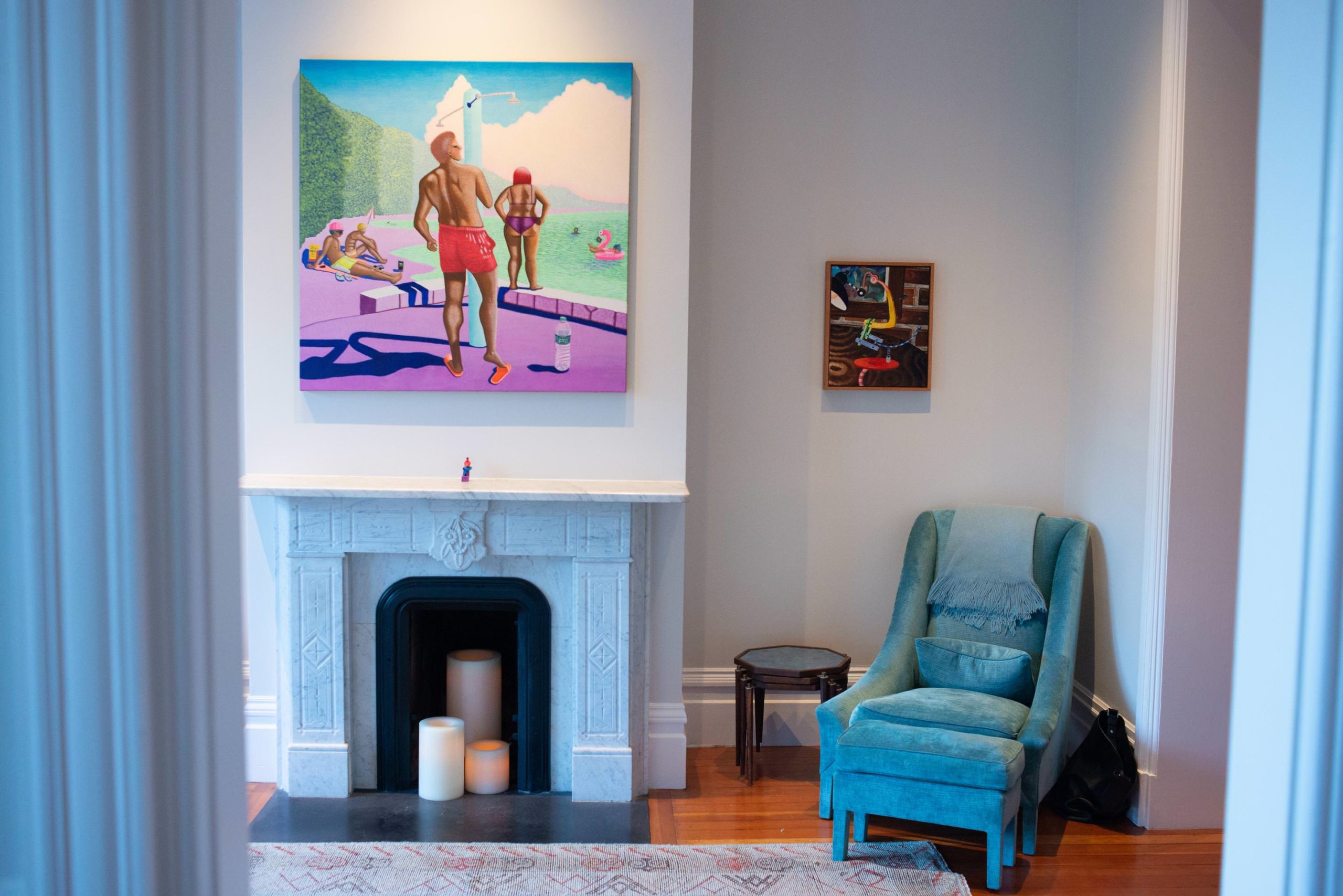
Installation view of “Pleasure Over Matter”
Courtesy of The Space Program.
To learn more about The Space Program, the inaugural show, and some of the works on view, Whitewall spoke with the host of the show, Isaac Pritzker, curator and artist Julio Felix, and artists James Leary and Kentaro Ikegami.
WHITEWALL: What was the starting point for “Pleasure Over Matter?”
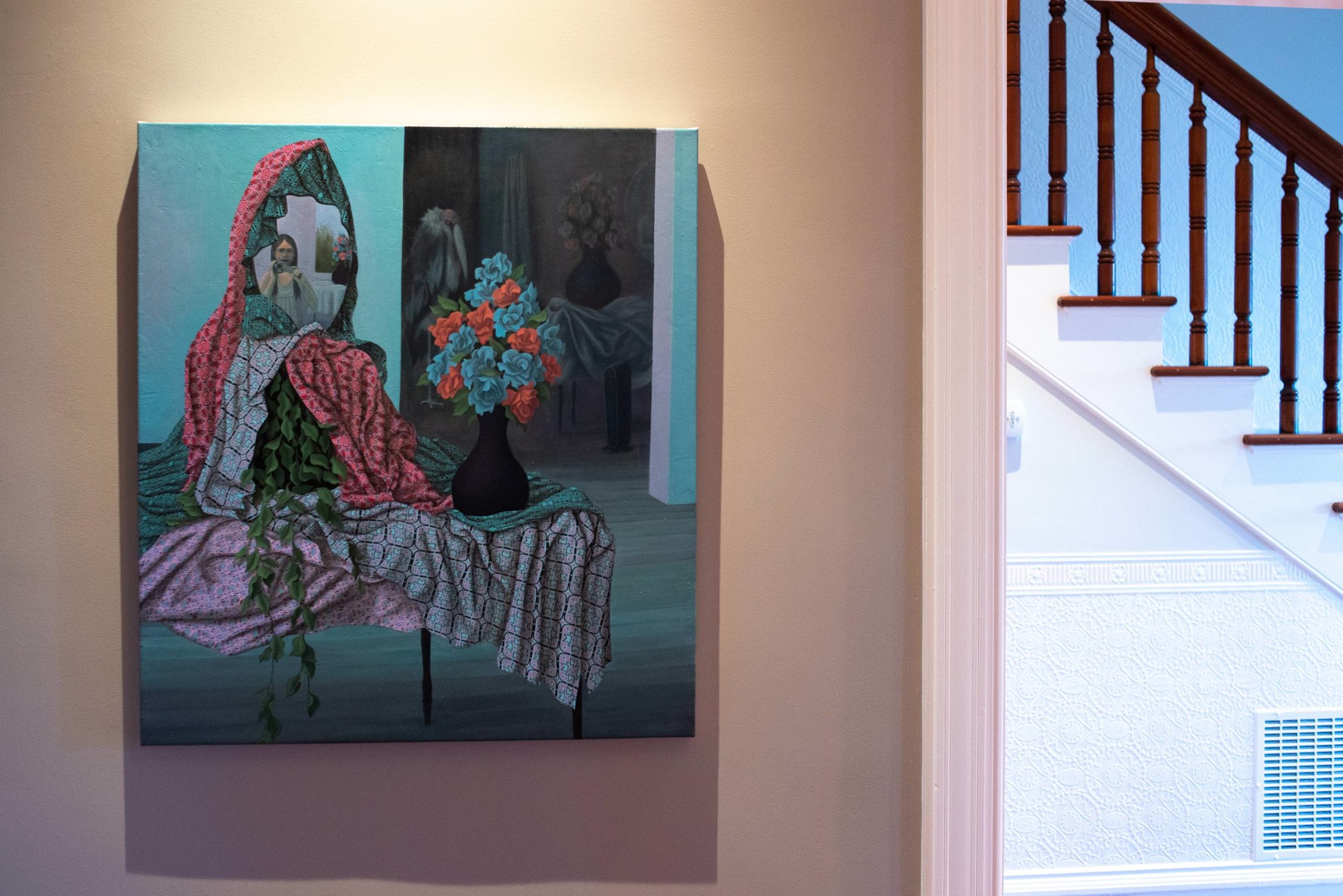
Installation view of “Pleasure Over Matter”
Courtesy of The Space Program.
ISAAC PRITZKER: The idea spawned out of a years-long conversation Julio and I have been having about the art communities in New York (where Julio works) and San Francisco (where I live). The concept was to bring New York art and artists to San Francisco and rally local artists to spark a conversation between people we knew in each city. There are things to learn from each scene and I think the cross pollination has been really fruitful.
WW: The show celebrates the launch of The Space Program, a new artist residency. Can you tell us about the program and its place within the SF art community?
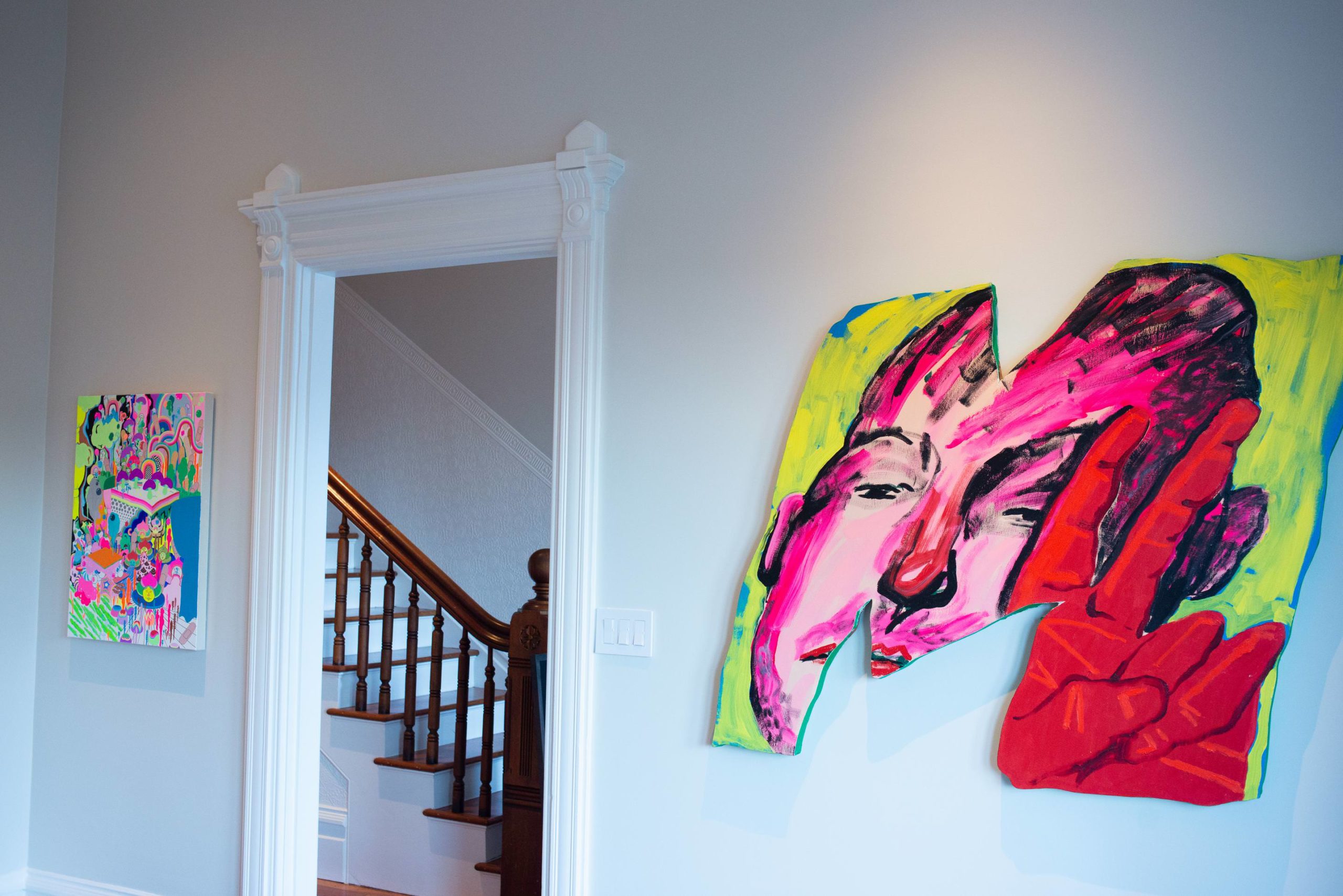
Installation view of “Pleasure Over Matter”
Courtesy of The Space Program.
IP: The Space Program is the brainchild of my brother, Jacob, and San Francisco artist Jud Bergeron. Very simply put, its purpose is to provide room for artists in a city where space is a dwindling resource. It is taking the form of a large converted warehouse in the Dogpatch neighborhood of San Francisco, which will support art across a wide range of media.
The program is in its infancy and won’t host its first artist until early next year, but this show seemed like an appropriate occasion to introduce the city to The Space Program.
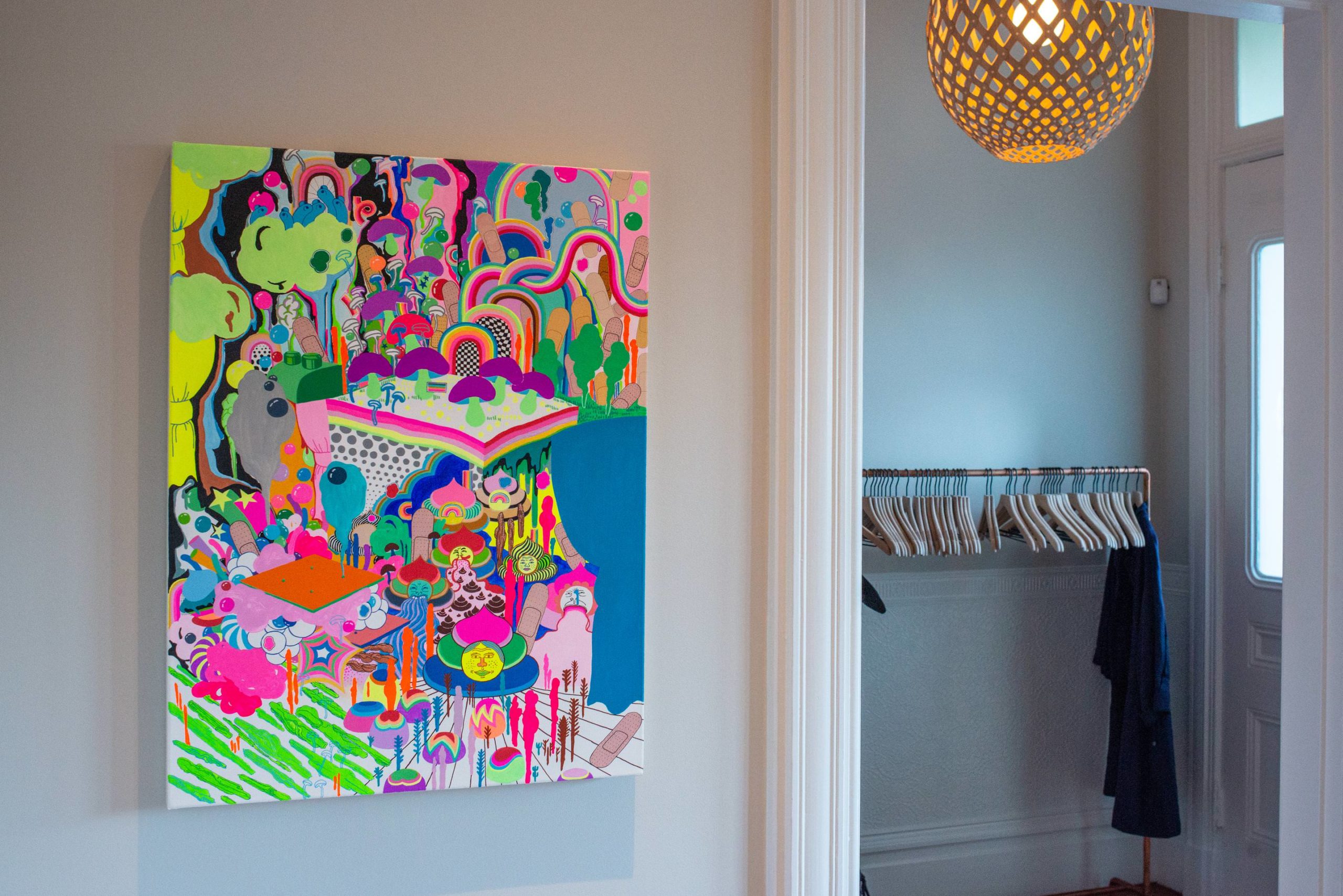
Installation view of “Pleasure Over Matter”
Courtesy of The Space Program.
WW: How did you go about choosing the artists included?
JULIO FELIX: I wanted to portray an arrangement of minds, and the way artists use materials in New York. I have been living in New York for the past seven years, so I know where and what is being made around the city. I asked the people 35 and under, who I thought were making great art, if they wanted to be part of this disruptive show in SF, and they did.
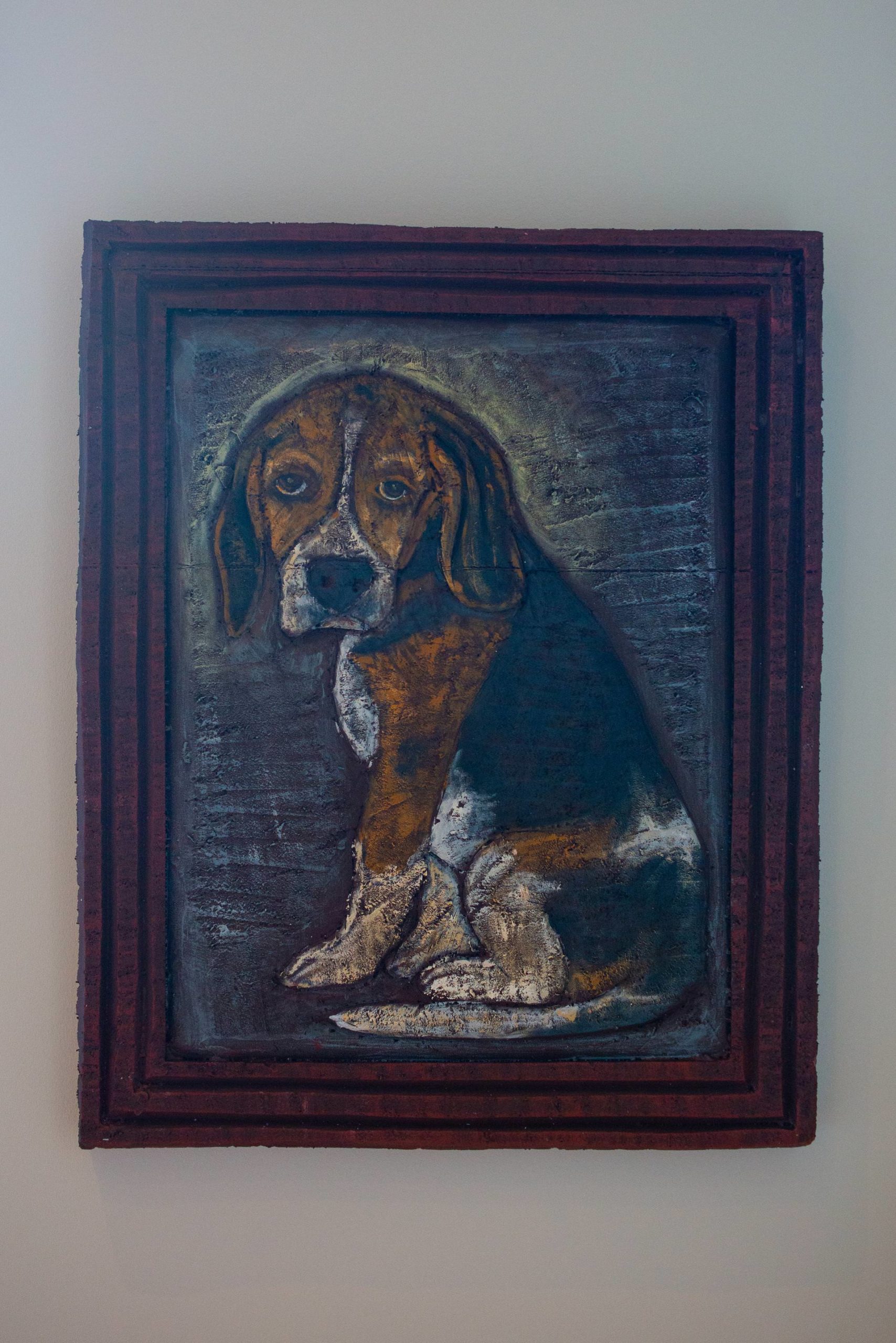
Installation view of “Pleasure Over Matter”
Courtesy of The Space Program.
WW: One particular goal of the show is to make people reconsider trivializing the purpose of materials. Why is this important to you?
JF: I think it’s very American to trivialize the purpose of materials. Think about Jackson Pollock, Robert Rauschenberg, Jasper Johns, Eva Hesse, Marisol, Warhol; the New York scene has always been about what is permissible in art. And I believe the purpose of materials in art is still up for debate—not only in New York, but all around America.
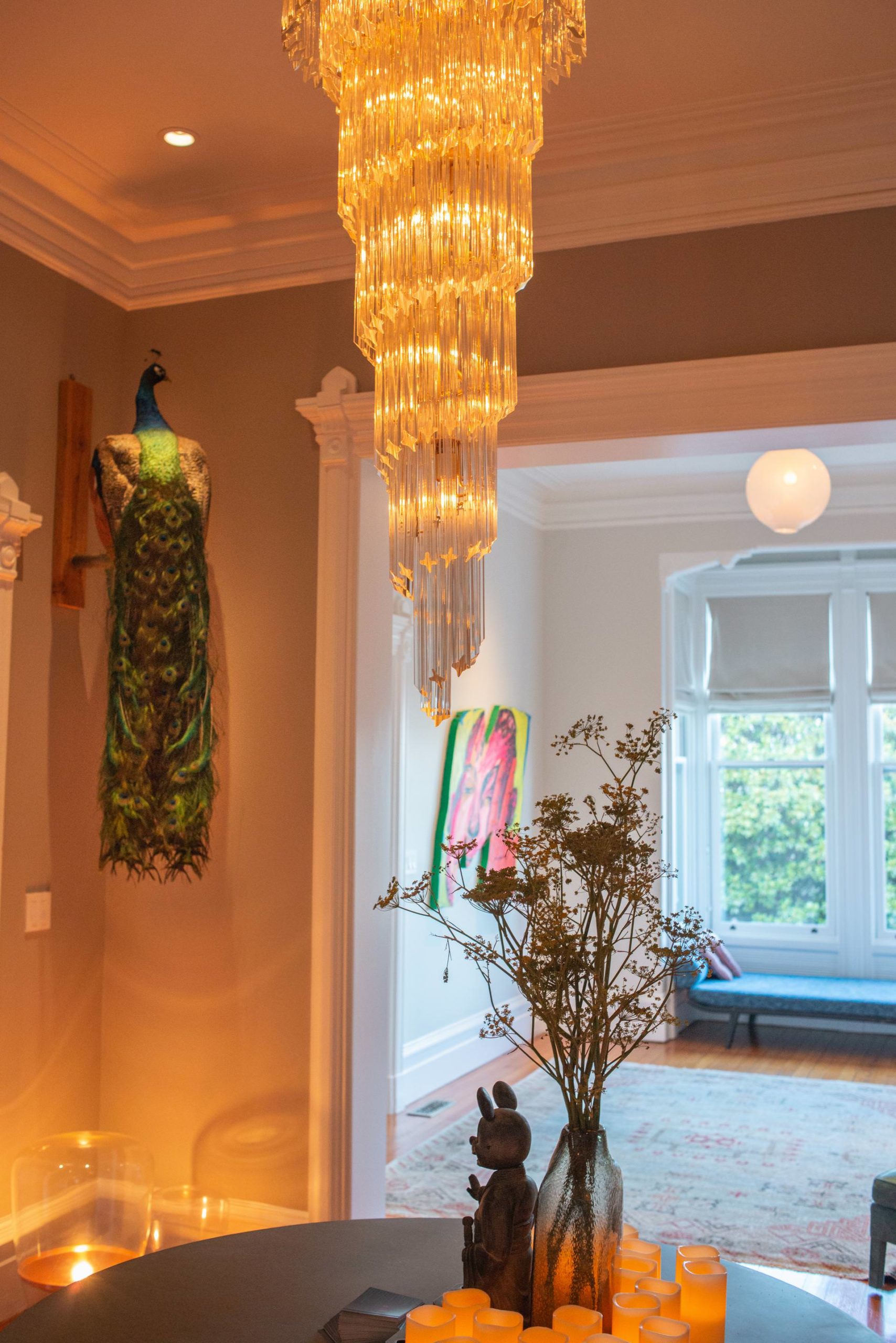
Installation view of “Pleasure Over Matter”
Courtesy of The Space Program.
WW: Can you tell us about your work in the show?
JAMES LEARY: “Cropped Pacifist” continues a series of shaped-canvas works that transpose depicted space into constructed space. A chromatically-ecstatic but perhaps disillusioned pacifist is extruded—cropped—through a leaning “M”. Though the rendered figure and the constructed panel seem aligned in their right-lilting momentum, the deeper relationship between what is represented and what contains that representation remains ambiguous.
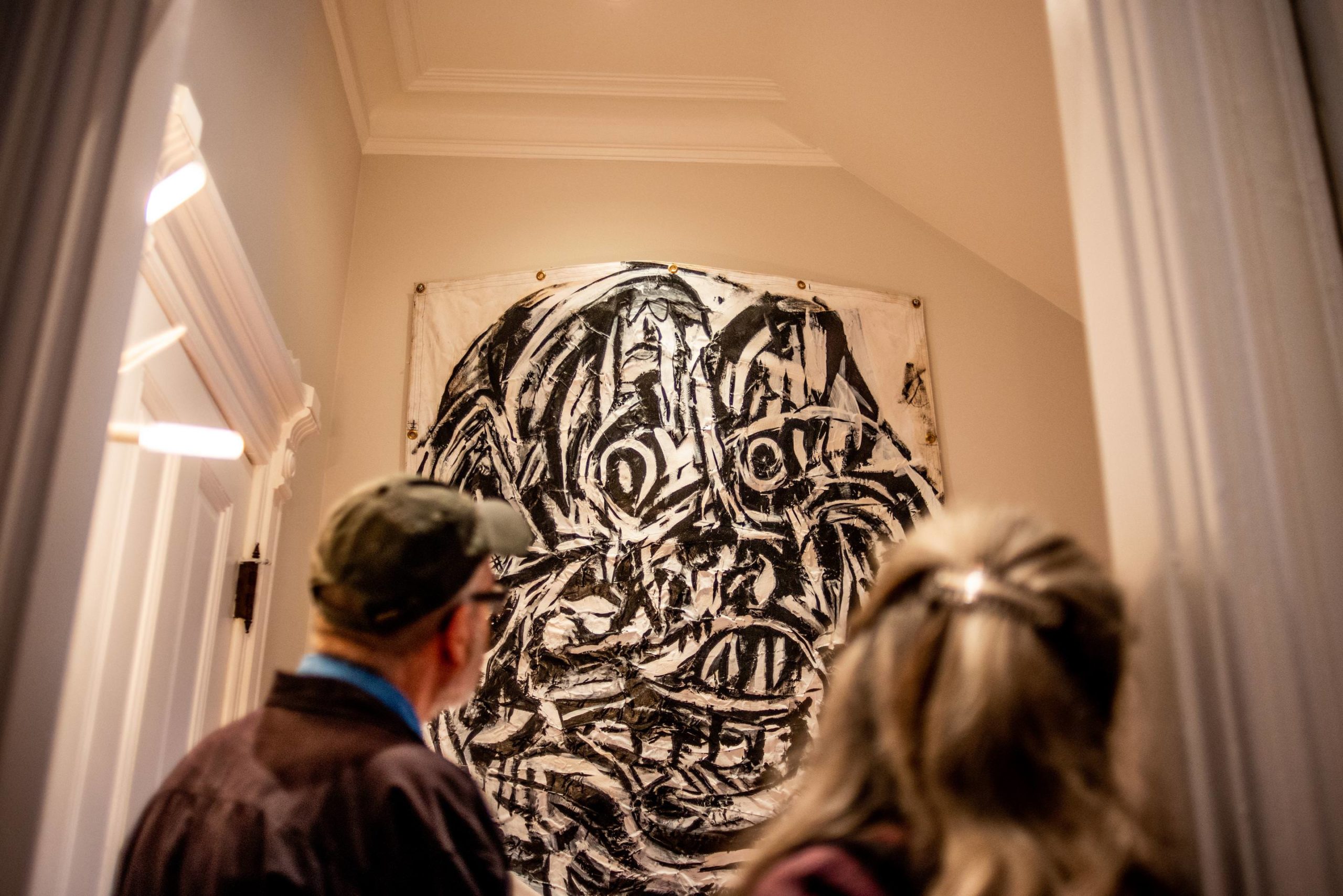
Installation view of “Pleasure Over Matter”
Courtesy of The Space Program.
Are we looking at a political rally through an “M” shaped window? Or watching a documentary on a shaped screen? Are we the pacifist, practicing our moves in a letter-shaped mirror? Or is the relationship more oblique—a dissonant collapse of subject and symbol?
KENTARO IKEGAMI: I have included a work that is the latest in a series I began two years ago.
In its parts, the works are made of sheer/semi-translucent fabric that is stretched over a reflective aluminum painting. I use the fabric not to obscure the painting underneath, but like a painter would use varnish—a unifying surface. Whereas in its whole, the naked eye can perceive the works’ nuances in color and depth, but the camera has much difficulty focusing as it can only read the stretched surface of the fabric.
Since JPEGs and PDFs have become the primary mode of looking at art, I impulsively need my work to exceed the capability of the camera, so the documentation of it will always be ersatz to actually looking at the thing.




